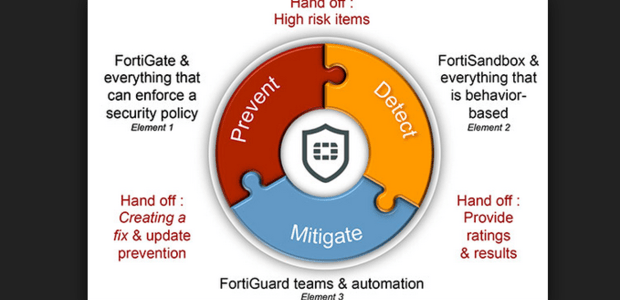advertisement
Breaking the kill chain: Protecting against the known and the unknown
Data theft is big business. More than 1.3 billion records have been exposed in the last two years. The threat…

Data theft is big business. More than 1.3 billion records have been exposed in the last two years. The threat evolution is faster than ever– we are, on average,discovering more new threats every day than identifying already known malware.
Today’s most damaging attacks are Advanced Persistent Threats (APT). Cybercrime is no longer random or about brute force, it’s more subtle – aiming to infiltrate, stay hidden, and extract data without detection.If security controls cannot detect the malware during this period, then it’s a matter of time before you become a statistic.
Too many of these breaches occur because of a lack of focus across the spectrum of possible threats or attack vectors.Rapid innovation on the malware front, the exploitation of new zero-day vulnerabilities, and emerging evasion techniques can all render any single approach ineffective.
advertisement
A deeper, more comprehensive approach is needed to counter these increasingly sophisticated attacks.Although covering a broad set of advanced and traditional tools for overall network security, here is a simple framework for combating APTs…
Prevent – The known threats
Lots of malware is already known. The cybercriminal might be highly creative but they exhibitthe same human flaw shared by us all: laziness. Last year, nearly a quarter of malware was more than ten years old and almost 90% discovered before 2014.
advertisement
Known threats should be blocked immediately through the use of next-generation firewalls, secure email gateways, endpoint security, and other similar products leveraging highly accurate security technologies.
It’s incredible how often network professionals don’t start with the basics. Doing simple things, like keeping security patches up-to-date, and continually testing and re-testing the security of your IT infrastructure, are the building blocks of a strong network.
Previously unknown malware and targeted attacks, however,can hide themselves from these measures. Traffic that can’t be swiftly dealt with here gets handed off to the next point of your multi-layered defence…
advertisement
Detect – The unknown
Many new approaches can detect previously unknown threats and createactionable threat intelligence. Sandboxing allows potentially malicious software to be handed off to a sheltered environment so its full behaviour can be directly observed without affecting production networks.
Headlines have lauded it as a perfect solution. While a critical component in the overall defensive scheme, don’t be fooled: sandboxing alone is no panacea. We know how attackers respond to new technologies: they figure out how they work, then find ways around them. We already have examples of how the cybercriminal is circumventing sandboxes. That’s why it’s important to stay updated: just as criminals evolve, your system needs to too.
Mitigate – Taking action
The prevention of threats into the network is the first priority for any security system. But a clear detection and remediation process is key when, not if, they do.
Once an intrusion has been validated, users, devices and content should be quarantined, with automated and manual systems in place to ensure the safety of network resources and organisational data.Previously unknown threats should be forwarded and analysed in depth, resulting in updates being fed back to the different services in the network providing every layer with the right mix of up-to-date protection.
It’s not one particular technology that’s the key to Advanced Threat Protection (ATP), but the notion of the integration and collaboration between them. ATP relies on multiple types of technologies,products, and research, each with different roles and each working in concert with one another.
We can expect to see continued cybercriminal innovation with an even greater focus on deceiving and evading existing solutions.While there is no “silver bullet”, deploying a multi-layered approach with established and emerging technologies,which work together,will help you break the kill chain of Advanced Persistent Threats.
(Imran Chaudhrey, Security Consultant and Major Account Manager, East Africa at Fortinet, a global leader and innovator in Network Security).